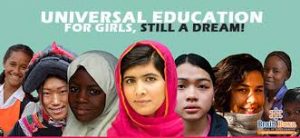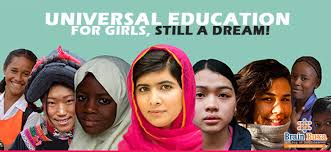Despite national commitments through a host of constitutional provisions as well as programmes to fulfill them, of inequalities of different kinds continue to persist in all aspects of social life including education. The benefits extended by the government, from time to time often do not reach a larger majority of Indians who mostly constitute Scheduled Castes (SCs), Scheduled Tribes (STs), Girls,Minorities, Children with Special needs and Other Backward Classes (OBC)
After independence, the Government of India has taken number of steps to strengthen the educational base of the persons belonging to the Scheduled Castes and Scheduled Tribes. Pursuant to the National Policy on Education-1986 and the Programme of Action (POA)-1992, the following special provisions for SCs and STs have been incorporated in the existing schemes of the Departments of Elementary Education and Literacy and Secondary and Higher Education :
(a) relaxed norms for opening of primary/middle schools; a primary school within one km walking distance from habitations of population upto 200 instead of habitations of upto 300 population.
(b) Abolition of tuition fee in all States in Government Schools at least upto the upper primary level.
In fact, most of the states have abolished tuition fees for SC/ST students up to the senior secondary level.
(c) Incentives like free textbooks, uniforms, stationery, schools bags, etc., for these students.
(d) The Constitutional (86th Amendment) Bill, notified on 13 December 2002, provides for free and compulsory elementary education as a Fundamental Right, for all children in the age group of 6-14 years.
(e) Sarva Shiksha Abhiyan (SSA) : SSA is a historic stride towards achieving the long cherished goal of Universalisation of Elementary Education (UEE) through a time bound integrated approach, in partnership with States. SSA, which promises to change the face of elementary education sector of the country, aims to provide useful and quality elementary education to all children in the 6-14 age group by 2010.
The main features of the programme are : (i) Focus on girls, especially belonging to SC/ST communities and minority groups.
(ii) Back to school campus for out of school girls.
(iii) Free textbooks for girls.
(iv) Special coaching remedial classes for girls and a congenial learning environment.
(v) Teachers’ sensitisation programmes to promote equitable learning opportunities.
(vi) Special focus for innovative projects related to girls education.
(vii) Recruitment of 50 per cent female teachers.
Scheduled Castes and Scheduled Tribes
As per the 2001 census, the population of SCs and STs taken together amount to 24.61 % of the country’s total population (SC 16.2% and ST 8.43%). A host of Articles (Articles 46,332,335, and 338 to 342) and the entire fifth and sixth Scheduled of the constitution deal with promotion of education and economic interests of these sections and to protect them from all forms of socialexploitation. Government at the national and State Levels have beenimplementing, from time to time, a number of programmes so as promote their education among them.
The major one’s include:
Postmatric scholarship to students
Provision of free school uniform and textbooks.
Provision of free reading writing material
Establishment of residential Schools
Relaxation in the minimum qualifying marks for admission for SC/ST candidates.
Career Orientation to students to ensure that the graduates have knowledge, skills and attitudes for gainful employment in the wage sector in general and self-employment in particular
Financial assistance for Remedial Coaching.It provides financial assistance to the existing coaching centers to prepare SC/STcandidates for the National Eligibility Test (NET) conducted byUGC/CSIR.
Remedial Coaching scheme at UG/PG level. Despite all these, the rate of literacy, Gross Enrolment Ratio (GER), and Dropout rate amongst SC and ST population continue to remain a serious cause of concern.
Women/Girls
As per the Census 2001, women constitute 48.26 % of the totalpopulation. Education for women’s equality is a vital component of the overall strategy of securing equality and social justice in education. The National Policy on Education, 1986 envisages the use of education as an instrument of basic change in the status of women. Para 4.2 and 4.3 of the NPE, 1986 states the intervening and empowering role of education.
Inter alia,they emphasize the provision of special support services and removal of factors which result indiscrimination against women at all levels of education. The policy also lays emphasis on women’s participation in vocational, technical and professionaleducation at different levels. The Constitution of India grants equality to women and forbids any discrimination based on religion, sex, race, caste or place of birth(Art.15). It also empowers the States to practice protective discrimination in favour of women.
Children with Special Needs (CWSN)
Children with Special Needs (CWSN) refer to all children those whorequire adaptations to the normal process of education due to problems of vision,hearing, movement, learning and intellect. These adaptations could be of learning materials like textbooks, teaching methods, homework and other assignments given in the class, assessment and examinations. Throughout the world, the children having disabilities or learning difficultiesare often marginalized within or even sometimes excluded from the schoolsystems. In many developing countries, the children remain hidden as a result of the stigmatizing attitudes and negative value dispositions of the communitymembers. As per Census 2001 data, CWSN constitute 2.1% of the total childpopulation. But the percentage of CWSN to total enrolment in elementary classes in 2007-08 is as less as 0.84.
Rehabilitation Council of India (RCI) Act 1992
The Rehabilitation Council of India (RCI) is a statutory body set up withthe twin responsibilities of standardizing and regulating the training of personneland professionals in the field of rehabilitation and special education.Trainingof special educators and resource teachers that can offer support services to children with special needs in regular schools is the responsibility of RCI.
Education represents true empowerment and must be used as a liberating force. It is widely accepted that there are remarkable increases in measures of quality of life index in the population that have become educated. With a little more sincerity, empathy and a sense of caring, the educational needs of these categories can be met and with that, their lives and those of the people around them can truly be transformed. The measures suggested in the variousrecommendations deserve to be fully implemented, subject of course, to theavailability of resources and an enabling legal and administrative framework.Through better targeting and tighter monitoring, all the funds allocated for these sections should be fully utilized and all the inputs should be made available.
